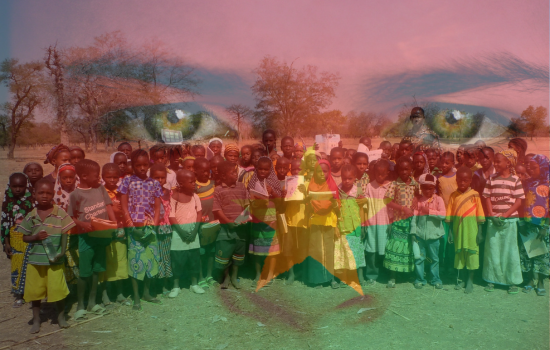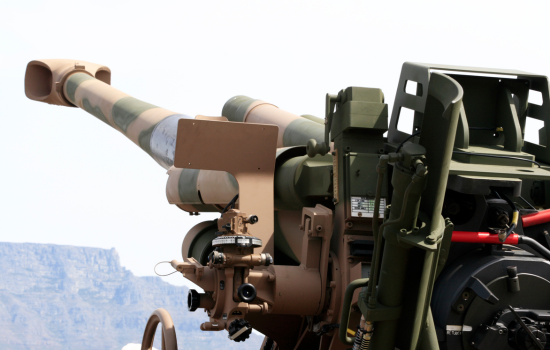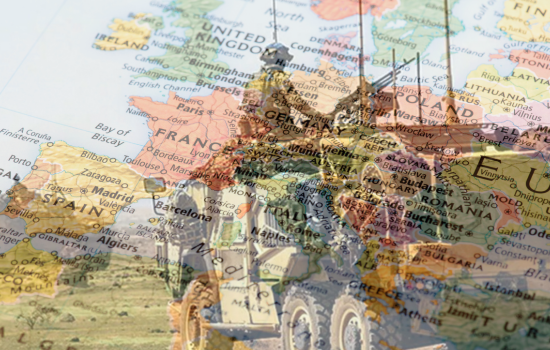Learning to digest during fighting – Real Time Knowledge Management
However, an imperative lesson learned from years of LIC implemented throughout the war, was how to learn lessons and disseminate insights in real-time to the fighting forces. This is known as Operational Knowledge Management[1].
In past wars, most of the learning was done before and after the war. This article is not aimed at the process or the core of the lessons learned after the war was over. Furthermore, it is not aimed at drawing the full scope and model of operational knowledge management efforts during the war, but rather to demonstrate the need to preserve the learning mechanisms developed throughout the 30 days of fighting.
Years of LIC has proven that learning mechanisms are crucial for coping with an asymmetric rival, which is an intuitive ‘learning organization’ [2, 3]. Learning throughout the fighting is crucial when confronting a dynamic enemy such as the Hizbullah, and learning cycles throughout the war proved to be from hours to days – obligating a similar ability on the part of the IDF. The ‘learning’ feature is asymmetric too, since in a hierarchical large organization such as an army, a structured learning mechanism is required to transfer knowledge (especially in short cycles), versus a networked cell structure, a smaller and dynamic organization, where operatives are closely acquainted. For instance, in Bint-Jbeyl, lessons learned from the Hizbullah and Golani brigade combat, were implemented immediately by Hizbullah when confronting the Paratroopers Brigade which attacked from another side of Bint-Jbeyl. However, the IDF established a learning mechanism, comprised of officers from the units and Ground Forces Command (GFC), to help learn the appropriate lessons and insights in real time (or as close as possible to it). Indeed, in the above example, officers from GFC and infantry corps (who are not part of the chain-of-command and thus not directly involved in conducting the battle), helped facilitate real-time operational knowledge, from the Golani Brigade’s command and control post, to that of the Paratroopers Brigade, later producing a written first-insights report, disseminated manually the following day to officers in the region from the rank of company commander.
So, what else is new? Shouldn’t we expect this to be standard military procedure? Well, it is far from trivial; a unit conducting a battle, is focused at that particular moment in time on the battle at hand, rescuing the wounded and achieving the set goals and has no time for another unit’s needs which are not connected to that battle (especially when things are not proceeding according to plan).
Indeed such a real-time learning mechanism does not replace any regular command channels or information and knowledge conveyed to commanders. However, based on operational knowledge management established by the IDF ground forces in recent years, it supports and enhances knowledge interaction amongst units and commanders.
Indeed, during the first days of the war, Ground Forces Command launched a real-time Center for Army Lessons Learned (CALL) in the Northern Command training base[4]. Every unit on its way to Lebanon, which stopped at the training base to obtain updates accrued from years of LIC in other regions, received ‘fast-forward’ training, an operational knowledge package and a digest of lessons learned so far, updated on a daily basis by the GFC Doctrine Department and the Professional Ccorps. These operational-knowledge printed digests, were disseminated in a ‘push’ mode rather than a ‘pull’ one, by GFC officers to commanders, down to company leaders in the field and in command posts on the Lebanese border, on a daily basis.
Similarly to the US army CALL [5] which operates on a routine basis, the GFC CALL collected, analyzed and dispersed operational knowledge and lessons learned in real-time amongst fighting forces. This is done on a regular basis in the IDF, by an array of operational-knowledge experts in the units [6] facilitated by GFC and the regional commands. During the war, it became apparent that northern command had neither the concentration nor the resources to focus on such aspects in the midst of the battle, and as a result BG Uzi Moskovich was appointed to facilitate real-time learning during the fighting at headquarters. Such learning forums conducted at various levels, triggered insights improving effectiveness and facilitated triple-loop learning from tactical to operational level.
Initial mapping of operational knowledge in the regular forces, who arrived at the fighting theater to reinforce the troops during the initial period after the fighting erupted, pointed to obvious knowledge gaps relating to the Lebanon region, due to years of LIC focused on Central Command and Gaza. Initial efforts were therefore focused on dispersing operational knowledge obtained from regional special units (e.g. Egoz) to other units.
Whilst in past (‘classic’) wars, learning was done mainly before and after the war (and from the number of investigative teams – one hopes following this one too), years of LIC have taught us how imperative learning during the fighting is, and this was implemented (at least to a certain level) tactically and operationally.
The nature of such learning is completely different- it is done throughout the fighting in real-time or as close to it as possible. It implements vehicles from operational knowledge management, adapted from years of LIC, based on SOP, on commanders’ awareness to knowledge as a prime operational resource in the knowledge-era battlefield, and an array of supportive CKO (knowledge officers and learning officers) in the units.
Since people have the knowledge – Knowledge Management is about interaction between people[7], thus the array of CKO and learning officers in units proved invaluable. At first it was made up from CKOs in those units (including most arriving from CentCom) who established such an array in years of LIC in Brigades and even battalions (e.g. the paratroopers’ brigade). Then, the array was reinforced both by learning officers, returning to their units from university, and by dedicated liaisons attached by the professional corps to units (infantry, engineering etc.). This allowed for the creation of an amalgam array of real-time learning officers and CKOs.
The common catch in KM, of technology perceived as a magic solution, was irrelevant since, as published during most of the war to most of the units, available communication was based on various voice channels. In future wars, C4I platforms should be considered for real-time operational knowledge transfer, including lessons learned during fighting – as long as it is actually embedded (unobtrusively) at the tactical level.
Commanders were exposed to lessons learned from other units in printed digests distributed in real-time, as well as through command channels, and via the array of CKOs, learning officers and liaisons from the corps and GFC.
In some cases, in the early stages of the war, past knowledge (rather than information) of commanders, experienced in the Lebanese arena, was conveyed to units before waging battle and proved that units and commanders were aware of the value of past knowledge as a resource.
The need to learn while fighting was initially derived from Hizbullah’s intuitive ability to learn in short cycles. Furthermore, this was the ROI on operational knowledge management. Indeed a hierarchy needs to study to learn, whilst a terrorist organization is an intuitive ‘learning organization'[8]. After a Hizbullah attack on a building, the GFC with the infantry corps issued an update through the CALL digests, about securing a few buildings together. It was distributed that day and implemented by the forces. However in less than 48 hours, Hizbullah apparently studied the change and simultaneously attacked three houses held by the paratroopers’ brigade (two of which were in the same compound).
The need to learn from the battlefield, to creatively innovate operational knowledge, to shorten learning cycles and speed up the dissemination of lessons learned – are imperative in contemporary warfare and characterize it. It will only become more so in the future. We must learn, preserve and enhance the real-time learning mechanisms and the methodology of operational knowledge management developed before and during this war, before the next conflict occurs.
Terrorist and guerilla organizations are aware of this, and we as hierarchies confronting them must acknowledge that knowledge is a prime resource, we must learn how to manage it and how to internalize – in real-time, and not just when the war is over.
(Views expressed in this article are the author’s and do not represent the IDF)
1. Ariely, G., Operational Knowledge Management in the Military, in Encyclopedia of Knowledge Management, D.G. Schwartz, Editor. 2006, Idea Group Inc.: Hershey. p. 713-720.
2. Ariely, G., “Knowledge is the thermonuclear weapon” for terrorists in the information age. 2003, ICT at the Interdisciplinary Center Herzliya.
3. Jackson, O.A., et al., Aptitude for destruction: Organizational learning in terrorist groups and its implications for combating terrorism. Vol. 1. 2005: RAND.
4. Ardan, E., Real Time Army Lessons learned, in “Bamahane”- IDF Weekly Newspaper. 2006. p. 6.
5. Sullivan, G. and M. Harper, Hope Is Not a Method. 1997, New York: Broadway Books.
6. Or, S. and G. Ariely, What is Operational Knowledge Management? Maarachot, 2005(403-404): p. 8-15.
7. Davenport, T.H. and L. Prusak, Working knowledge: how organizations manage what they know. 1998, Boston, Mass: Harvard Business School Press. xv, 199.






